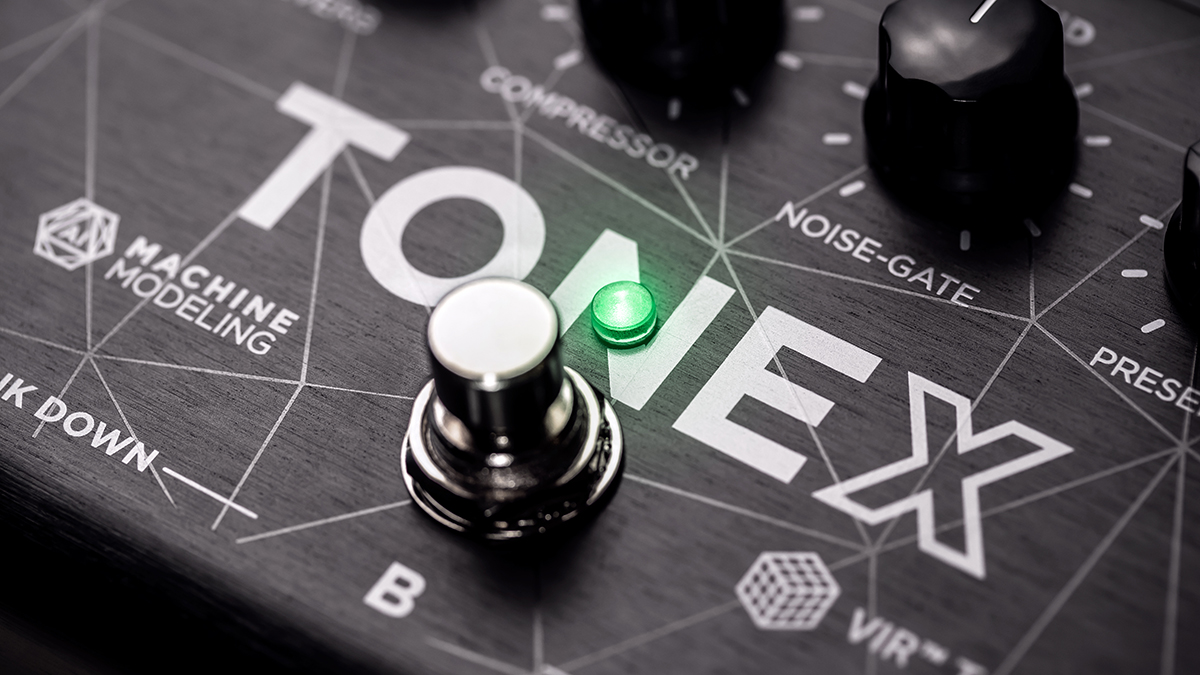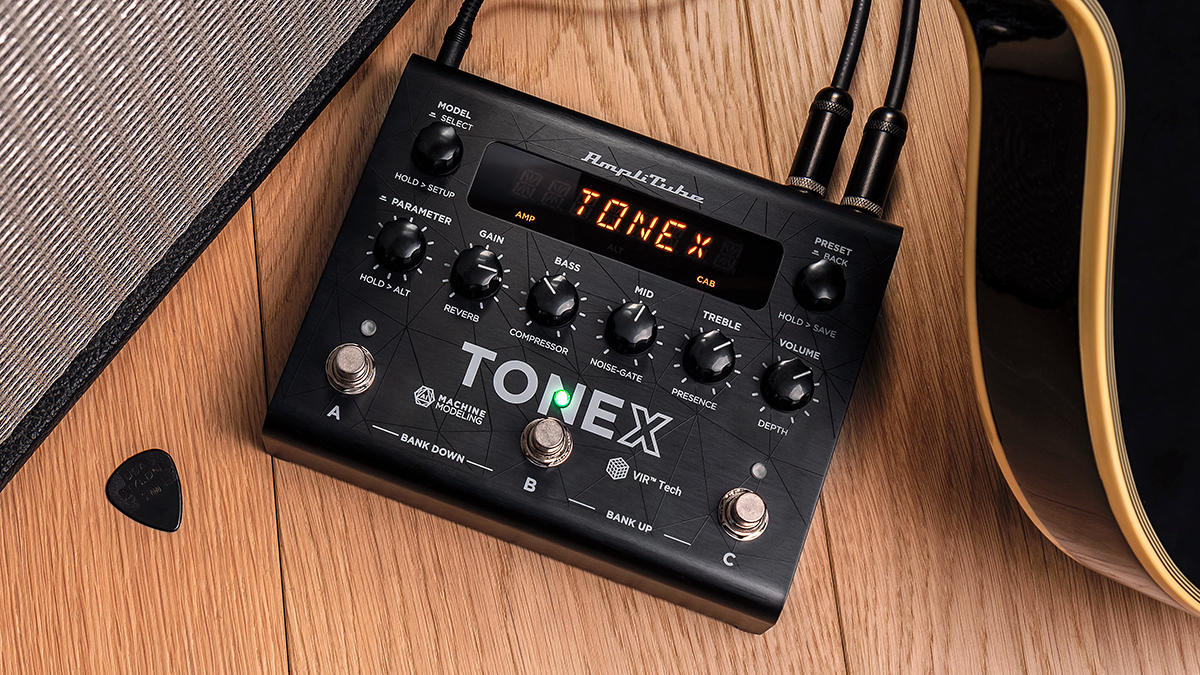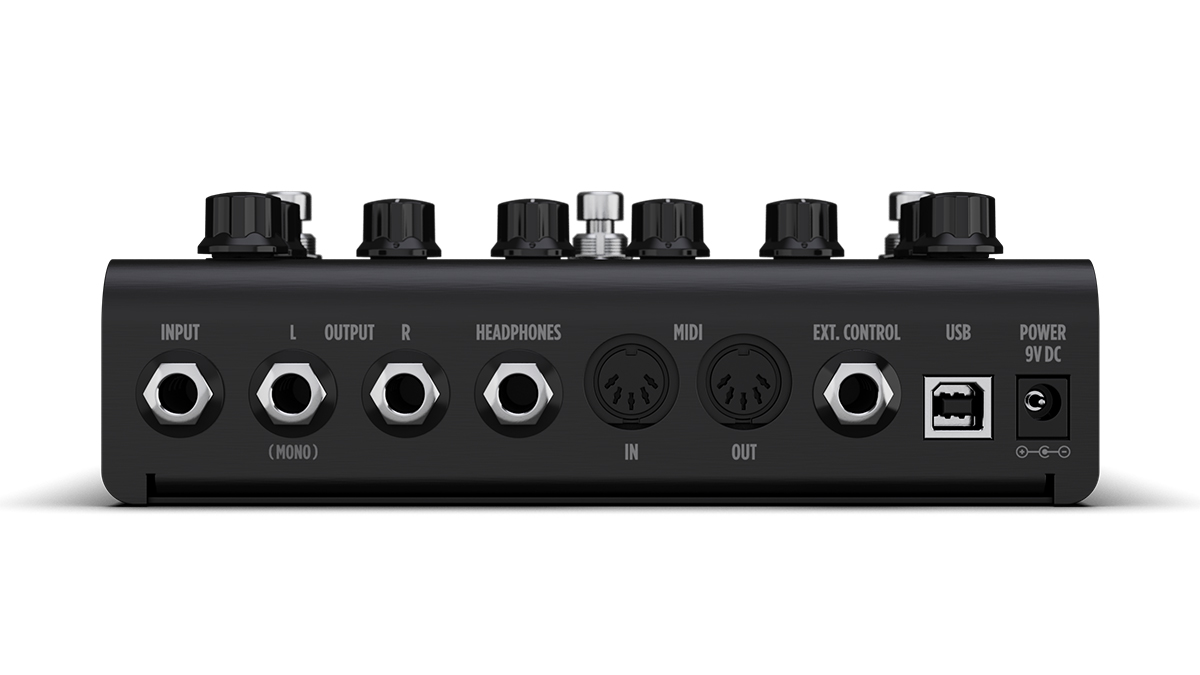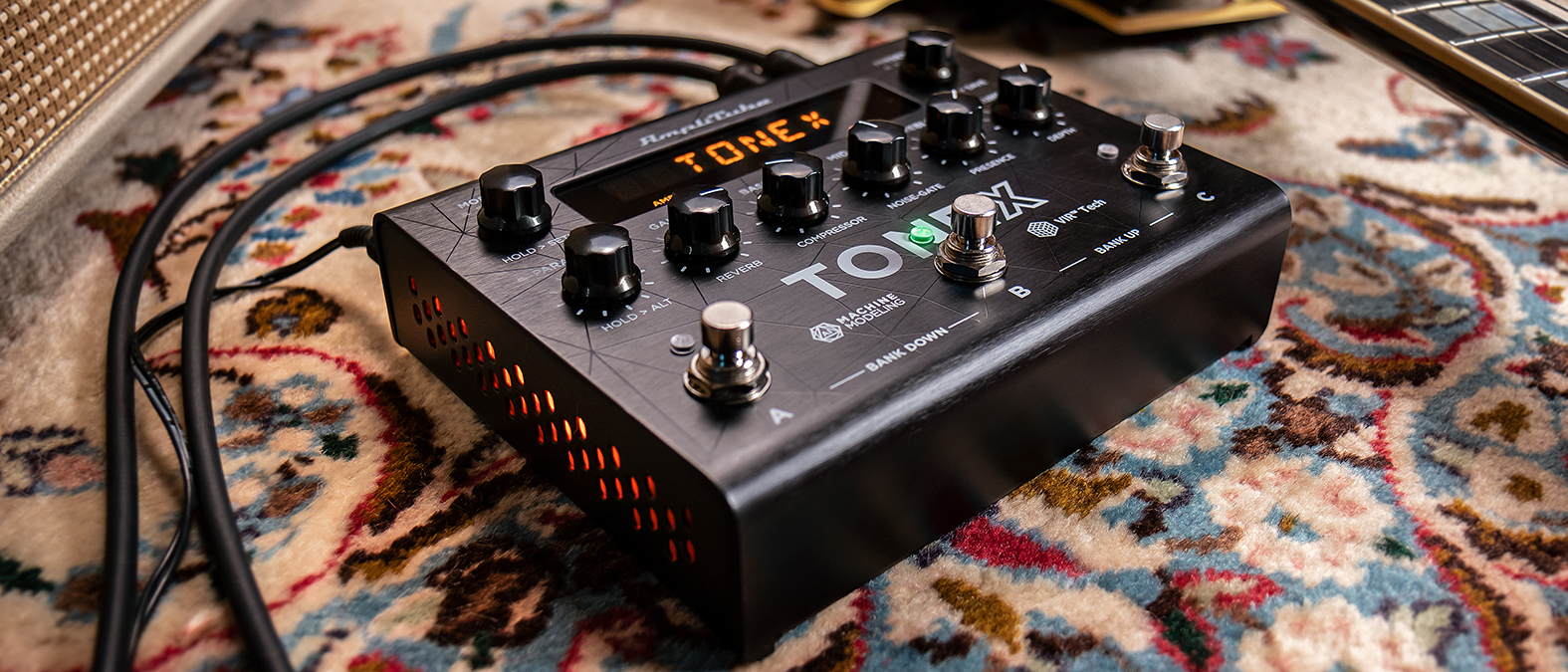MusicRadar Verdict
Where it matters, the sounds, the Tonex is faultless. The question for players will be if you also want effects in a single modelling unit. If amps all day is the goal, then the Tonex may well be the best-sounding unit in this price bracket. Whether the audience will notice the difference between this and a competitor, let alone this and the real deal, is another story
Pros
- +
Excellent models
- +
Huge scope for expansion and customisation
- +
Very good reverbs
Cons
- -
Not a multi-effect unit
- -
Simple display panel
- -
Menu navigation is fiddly at first
MusicRadar's got your back
IK Multimedia ToneX Pedal: What is it?
IK Multimedia’s latest foray into hardware is here. The ToneX pedal takes its name from the tone capture plugin of the same name, as a hardware equivalent. The goal was a high-end, customizable amp modeller and profiler that even normal humans can pick up in minutes to use their own captures live on stage.
Though some have heralded it as the first affordable modeller, that’s not strictly true. Surely that accolade should go to the Line 6 POD - nevertheless, the ToneX is one of the more affordable current-generation modelling units.
While there are other boxes such as the Line 6 HX Stomp, with its excellent user interface, in this price bracket, the ToneX sees itself competing with the likes of the Axe-FX floorboards.
Unlike the Axe and other competitors, the ToneX is tightly focussed on amp modelling and not effects. Its only effects, reverb and compression, suggest it’s a more direct competitor to units like the Two Notes Torpedo range. It can function as an audio interface, but this is also common among its competitors.

IK Multimedia ToneX Pedal: Performance and verdict
For some years now digital modelling has been virtually indistinguishable from the real thing. Accurate IRs and physical modelling reverbs have thrown enough smoke in the eyes of the listener that even a studio veteran can’t tell the difference.
The ToneX amp models are excellent, as you’d expect from a company that has been at the forefront of amp modelling for a decade. From Fender Cleans to Dumble Crunch and even metal chug, all the tones you’d expect are here.
Whether you throw humbuckers, single coils or even a seven-string at it, the Tonex keeps up. Where it stumbles with extended-range playing, as many amps do, the highly tweakable EQ is more than sufficient to tighten things up.
It’s on the reverb point the ToneX has a trick up its sleeve. On each patch, there’s assignable reverb with multiple control parameters. This can either situate your amp in a room or add traditional spring reverb or studio plate reverb effects. These reverbs are excellent, and even if the amp modelling was a bit wonky - it isn’t - they would further sell the sound of a real amp.

It’s in the interface where the pedal is weaker. On the plus side, having a single display panel is about as simple as it can get. It’s maybe why they’re able to ship the pedal at this price point.
However, it is less intuitive than the layouts used for other competitors like the Line 6 HX range. Then again, the focus of the ToneX is more tightly on the amp. Although there is EQ and compression available, the signal chain is much shorter and more specialized. This means you don’t miss the better visual representation of other units that also offer a smorgasbord of effects.
The control scheme is sensible, and once you get the hang of toggling to alternative modes, editing patches is a breeze - certainly compared to single-panel rack gear.
The biggest drawback is connectivity. Without an effects loop, the pedal is much harder to use as a true ‘amp’, rather than simply a pedal platform at the end of your chain. This is somewhat at odds with other floorboard modellers and amps, which allow for more flexible routing of other stompboxes that you own.
Secondly, the input is mono-only. This means stereo pedals in your rig can’t be used to their full potential. For many, these won’t be big issues, but for some, they will be a deal-breaker.

Naturally, you can also engage and disengage individual components of a patch, to suit a hybrid rig or recording situation. This is key for flexibility since you can load your own IRs, whether you have either captures or third-party IRs.
Even so, the number of available presets is already pretty overwhelming. That’s even before you even consider the thousand additional presets available for download, or user ones. It pays to start simple, auditioning some of the built-in patches, or loading IRs you already know well from elsewhere. This means you can isolate and audition individual parts of the Tonex’s signal flow.
The Tonex comes with an unlock for the AmpliTube 5 and Tonex plugins, meaning that you can use the pedal as a vehicle for presets created elsewhere. In terms of bang for buck, getting these two plugins for free is a big part of why this pedal is such good value.
Additionally, you can use the Tonex pedal as an audio interface. This is a common feature on high-end digital pedals. Maybe we’re old-fashioned, but we figure most players even at the bedroom studio level will prefer a stand-alone audio interface. Still, if you’re just getting started, it’s a useful feature to have, while on the road you could use the Tonex as a quick solution for on-the-go demo tracking.
MusicRadar verdict: Where it matters, the sounds, the ToneX is faultless. The question for players will be if you also want effects in a single modelling unit. If amps all day is the goal, then the ToneX may well be the best-sounding unit in this price bracket. Whether the audience will notice the difference between this and a competitor, let alone this and the real deal, is another story.
IK Multimedia ToneX Pedal: The web says
"Considering its price compared to other hardware capture options, the ToneX Pedal is a definite game-changer."
GuitarWorld
IK Multimedia ToneX Pedal: Hands-on demos
IK Multimedia
The Studio Rats
Reverb
IK Multimedia ToneX Pedal: Specifications
- Sockets: Input, L out (mono), R out, Headphones, MIDI In/Out, Ext control, USB, Power
- Controls: Model, Preset, Parameter, Gain, Bass, Mid, Treble, Volume
- Power: 9V DC centre-negative (supplied)
- ADA: 24-bit/44.1 kHz USB audio interface
- Presets: 150 Presets (50 banks x 3 preset slots)
- Software: AmpliTube 5, Tonex
- CONTACT: IK Multimedia
Alex Lynham is a gear obsessive who's been collecting and building modern and vintage equipment since he got his first Saturday job. Besides reviewing countless pedals for Total Guitar, he's written guides on how to build your first pedal, how to build a tube amp from a kit, and briefly went viral when he released a glitch delay pedal, the Atom Smasher.
“I used everything I knew about music”: How Green Day exceeded expectations with their most ambitious song
YouTube just added AI tools that makes musicians, library music and video editors redundant
“Every one of them said yes without hesitation": Hank Marvin and Roger Taylor have just remade a '60s classic for charity











